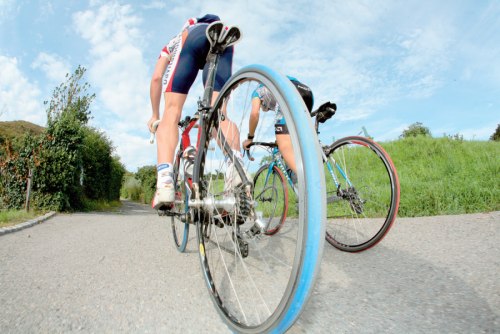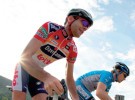Most climbs we encounter tend to be short and sharp, a completely different entity to the long climbs of the Alps. Steve Thomas spoke to seasoned pro Cadel Evans and climbing hot shot Trent Lowe about ‘power climbing’.

Even in the depths of the highest mountains of Australia you would find it hard to come across any number of extremely long endurance climbs such as those of the great tour climbs of Europe. But we do have lots of short sharp and repetitively nasty climbs, shockers that bite like venomous scorpions, smacking your legs and lungs into lactate overload. Sure enough we could consider these the realms of climbers, but in reality they are not long enough to bring out the best in a true climber. No, these are power climbs; short intense efforts that hurt every bit as much as the longer climbs but require a totally different approach and demand different qualities to master successfully. With this in mind we spoke to Cadel Evans and Trent Lowe, men who seem to be able to tackle both styles of climbing well, and asked them to show us how it’s done and how to improve.
What are the key differences between endurance and power climbing?
TL: “With endurance climbing you generally need to find your rhythm and settle in to the climb. But, power climbing is going to use a lot more energy in a short space of time, and the pace will often be dictated to you.” CE: “‘Pure climbers are aerobic climbers suited to climbs of more than five minutes’ duration. Riders like Armstrong, Basso or myself for example. ‘Power climbers’ are individuals with a high anaerobic capacity. They can do many repeated efforts on shorter climbs. In general these are riders more suited to the classics, like Boonen, Bettini or O’Grady.”
 How do power and endurance climbers differ?
How do power and endurance climbers differ?TL & CE: “Power climbers are riders who can put out a whole lot of power in a short burst. Endurance climbers rely on having a good power to- weight ratio that can help them to climb at a high threshold for a longer period of time.”
What are the key principles in power climbing?
TL: “Good technique is important; you really need good core strength to anchor and contain the power your legs are putting out. Your arms will pull on the bars a great deal to help this. Maintaining cadence is important; you must maintain good cadence and stay on top of the gear.”
CE: “Power!”

“Power climbers are individuals with a high anaerobic capacity. They can do many repeated efforts on shorter climbs.” Cadel Evans
“Practice and experience are important; if you can learn to put out a lot of power in the saddle at high cadence this will really help” Trent Lowe
How do you position yourself in a bunch for a power climb?
TL: “As with any critical climb in a race, you need to start close to the front of the group; the only issue is that every other rider wants to be there too. You need to try and be relaxed and not waste too much energy getting there and holding a good position as you don’t want to be above your threshold before the climb starts. You also need to be sure not to get boxed in, as riders will bunch up as the pace slows and you could get baulked, so always leave some get out room.”
CE: “Positioning in the bunch is more important for the shorter power climbs because there is less time to make up lost ground. Otherwise it is the same for the longer climbs; stay close to the front and out of trouble.”
What is the optimal bike position?
TL: “In the majority of cases the road will be smooth, and so you focus on getting the power out effectively, which means predominantly riding out of the saddle with your upper body and trunk taking a lot of the work load and bracing your legs to produce maximum power. If the surface is poor, you may need to stay in the saddle and keep your upper body well anchored by pulling on the bars but staying relaxed at the same time. In the wet you need to keep some weight over the back wheel to keep traction; you need to find that balance before you slip.”
CE: “On shorter climbs you will be pushing at a higher level, which means a lot more out of the saddle riding with your upper body also working hard, sitting at times to ease things. If the road conditions are not optimal then a rider will always have to remain seated and maintain a smooth consistent pedal stroke, with an even power output, which will hopefully avoid any loss in traction.”
What basic things should you be aware of, especially concerning other riders?
TL: “Pay attention not to get caught behind a rider who may have got their gearing wrong, or is just going backwards because they are not strong. Always try to leave yourself a way out or around other riders. Look for the part of the road that is the least steep; sometimes if may be smoother on one part of the road than another. Go for this if it’s dry.”
CE: “You always have to pay attention to what the riders are doing ahead of you; if someone looses the wheel in front of you then you need to be ready to close the gap immediately.”
 What are the key gearing principles?
What are the key gearing principles?
CE: “On shorter climbs you will nearly always use larger gears to maintain speed before, during, and after the climb. This may mean a faster approach, but be sure not to find yourself stuck in a huge gear with which you cannot react to accelerations.”
TL: “Enter the climb in the right gear and shift down accordingly; always under estimate slightly, as on power climbs you can often not shift down easily, especially off the bigger chain ring. Don’t let the gear get on top of you either.”
How do you work on a pace and rhythm to suit you?
TL: “Practice and experience are important; if you can learn to put out a lot of power in the saddle at high cadence I think this will really help you. And practice anchoring your upper body. Each time you push on the pedals your arms pull on the bars. Core strength is the key, so work on an exercise ball away from the bike will also help.”
CE: “A lot of this comes with experience and knowing your body and how it reacts and what you are capable of sustaining, but ultimately the lactate in your legs will always tell you this!”
How can you build your power climbing strength?
TL: “By doing short explosive intervals on a climb, or just punching over a rolling hill, maintaining momentum and speed, but not losing your good and composed technique. Brad McGee told me at the last race I did with him to ‘Never give away style for performance!’
CE: “Perfect practise makes perfect. The more short climbs you ride, the more you will improve. It is important to push yourself to improve, and to know how far and how often you can do this.”
How do you work on a pace and rhythm to suit you?
TL: “Practice and experience are important; if you can learn to put out a lot of power in the saddle at high cadence I think this will really help you. And practice anchoring your upper body. Each time you push on the pedals your arms pull on the bars. Core strength is the key, so work on an exercise ball away from the bike will also help.”
CE: “A lot of this comes with experience and knowing your body and how it reacts and what you are capable of sustaining, but ultimately the lactate in your legs will always tell you this!”
How can you build your power climbing strength?
TL: “By doing short explosive intervals on a climb, or just punching over a rolling hill, maintaining momentum and speed, but not losing your good and composed technique. Brad McGee told me at the last race I did with him to ‘Never give away style for performance!’
CE: “Perfect practise makes perfect. The more short climbs you ride, the more you will improve. It is important to push yourself to improve, and to know how far and how often you can do this.”

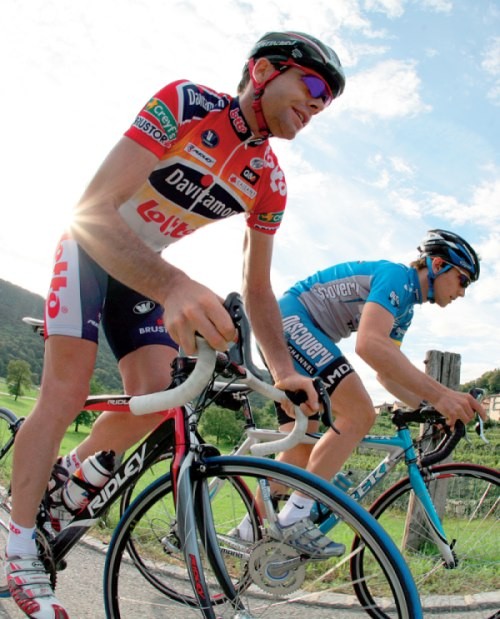
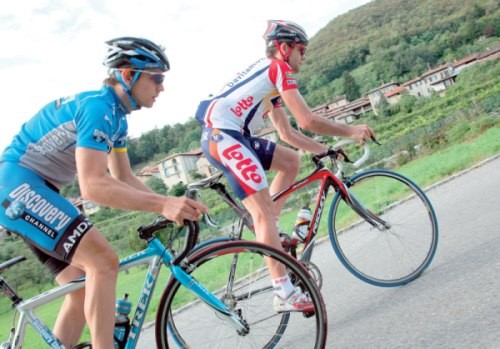 How do power and endurance climbers differ?
How do power and endurance climbers differ?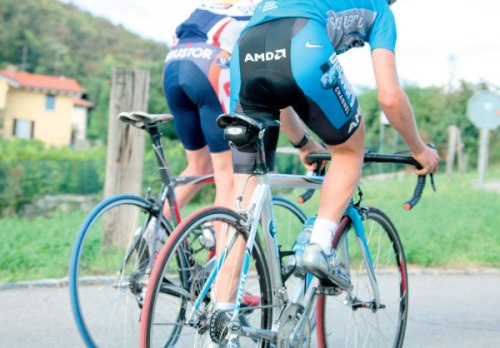
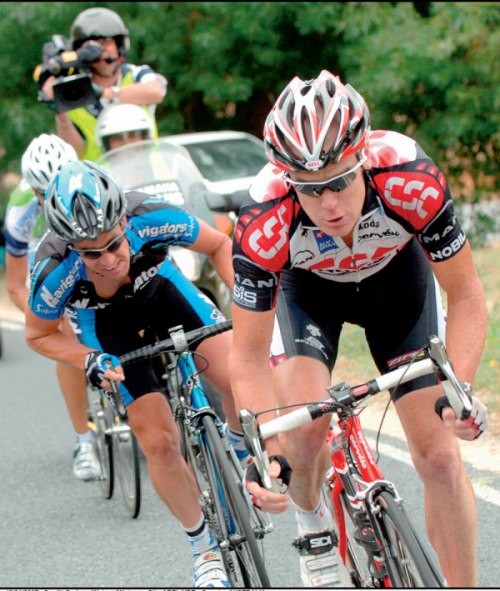
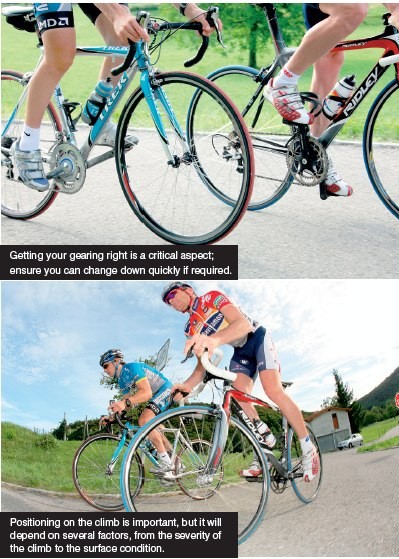 What are the key gearing principles?
What are the key gearing principles?